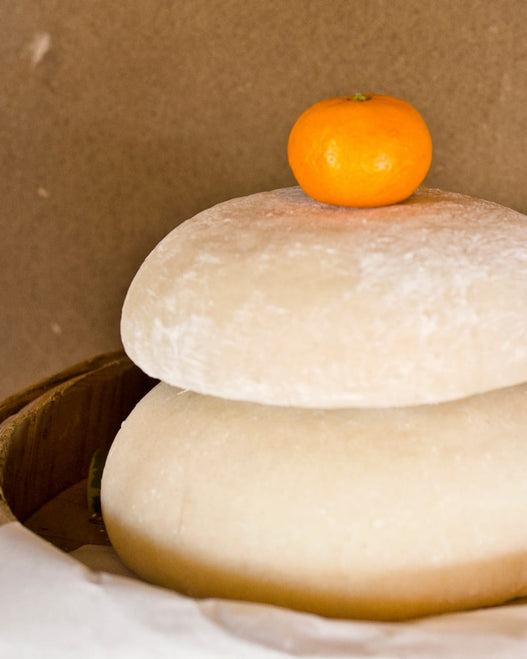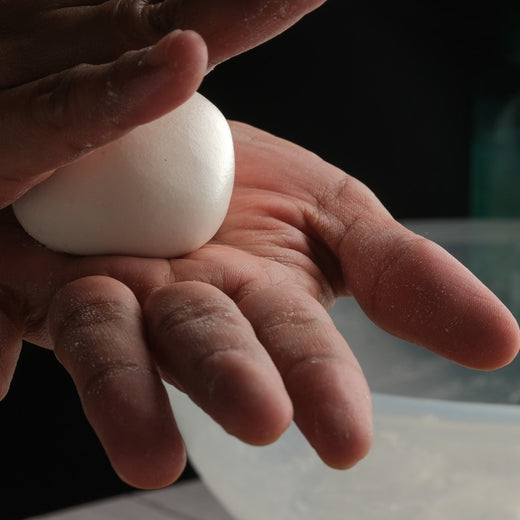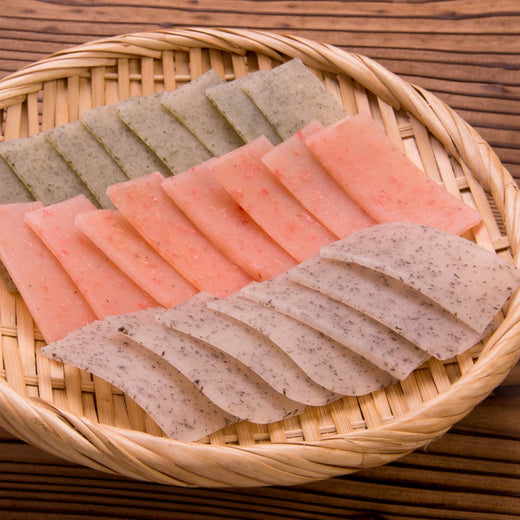
餅
Mochi
Mochi is a traditional Japanese food made by steaming and pounding glutinous rice into a soft, chewy texture. It is commonly eaten during New Year celebrations in dishes like ozoni (mochi soup) or grilled with soy sauce and seaweed as isobe-yaki. As a confection, mochi is enjoyed in sweets like daifuku and kusa mochi, often paired with sweet red bean paste or roasted soybean flour for an even richer flavor.

Type of Mochi
Kiri Mochi
Kiri mochi is a rectangular-shaped mochi that is easy to store and use in various dishes. It can be grilled, boiled, or added to soups like ozoni or sweet red bean soup (oshiruko). While enjoyed year-round in Japan, it is an essential food for New Year celebrations.

A Symbolic Round Mochi
Maru Mochi
Maru mochi is a hand-rolled, round-shaped mochi that is especially popular in western Japan. It is commonly used in ozoni (New Year’s soup) and grilled for a simple yet delicious treat. The round shape is considered auspicious, making it a common choice for celebrations and special occasions. In some regions, smaller maru mochi is enjoyed with kinako (roasted soybean flour) or black sugar syrup.

Fragrant and Refreshing Mugwort Mochi
Kusa Mochi
Kusa mochi is a green-colored mochi infused with yomogi (Japanese mugwort), giving it a refreshing aroma and a slight bitterness. It is traditionally enjoyed in spring, often filled with sweet red bean paste or dusted with kinako (roasted soybean flour). Yomogi has long been valued for its medicinal properties, making kusa mochi not only delicious but also beneficial for health.

A Simple Yet Flavorful Kinako Mochi
Abekawa Mochi
Abekawa mochi is a soft rice cake generously coated with roasted soybean flour (kinako) and often drizzled with black sugar syrup. This classic treat became famous in the Edo period as a specialty of the Abekawa region in Shizuoka. Its simple yet rich flavors continue to be loved by many today.

A Soft Mochi Filled with Sweet Surprises
Daifuku
Daifuku is a soft rice cake filled with sweet red bean paste, available in various flavors. While the classic version contains azuki bean paste, modern variations include matcha, strawberry, and even cream fillings. Small and easy to eat, daifuku is a popular treat for gifts and tea-time snacks.

A Crispy and Savory Mochi Snack
Kaki Mochi
Kaki mochi is a type of Japanese rice cracker made by slicing and drying mochi before grilling or frying it. It has a crunchy texture and comes in various flavors, such as soy sauce, salt, and nori (seaweed-wrapped). This savory snack is perfect for pairing with tea or enjoying as a light treat.

A Traditional New Year’s Decoration
Kagami Mochi
Kagami mochi is a symbolic rice cake displayed during the New Year, consisting of a smaller round mochi stacked atop a larger one, often topped with a daidai (a Japanese citrus fruit). It represents prosperity and good health for the coming year and is commonly placed in homes and shrines. After the New Year period, it is traditionally eaten in dishes like oshiruko (sweet red bean soup) or deep-fried as crispy snacks.







